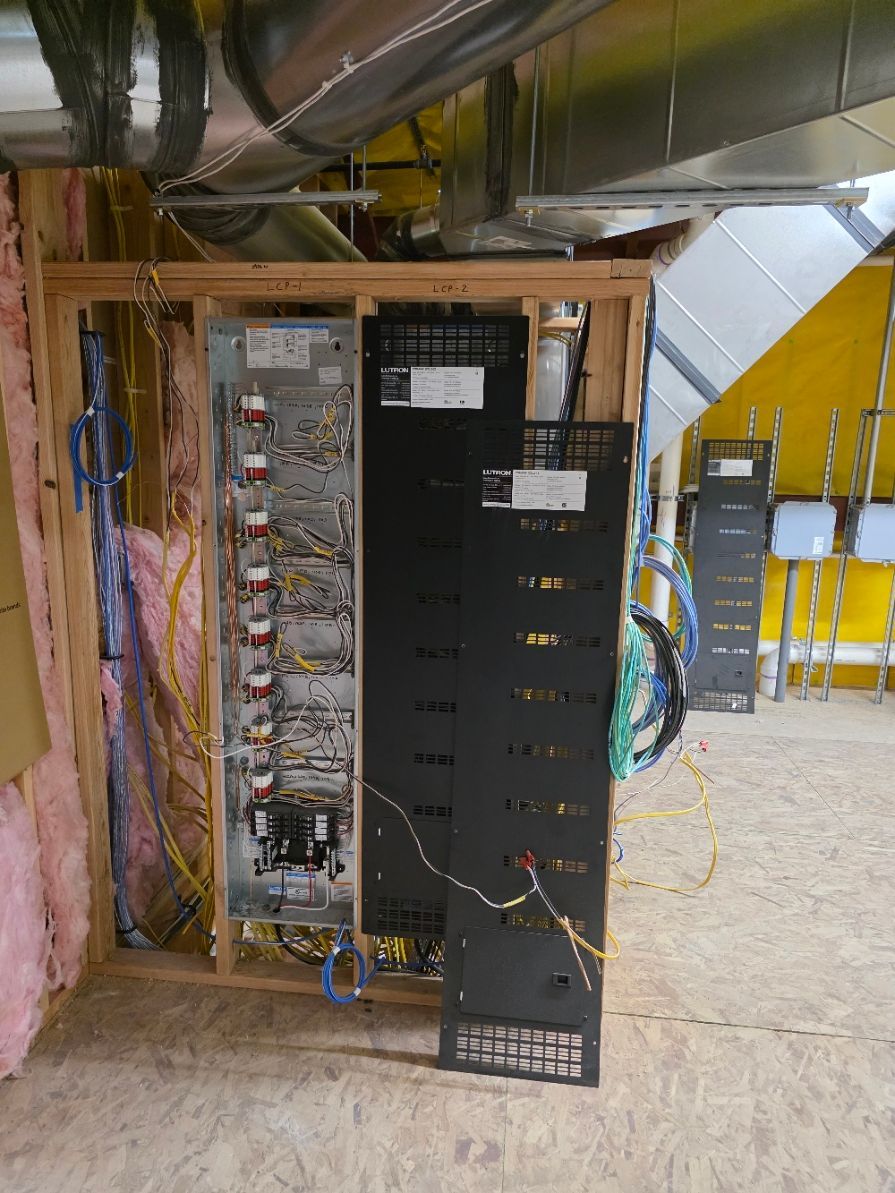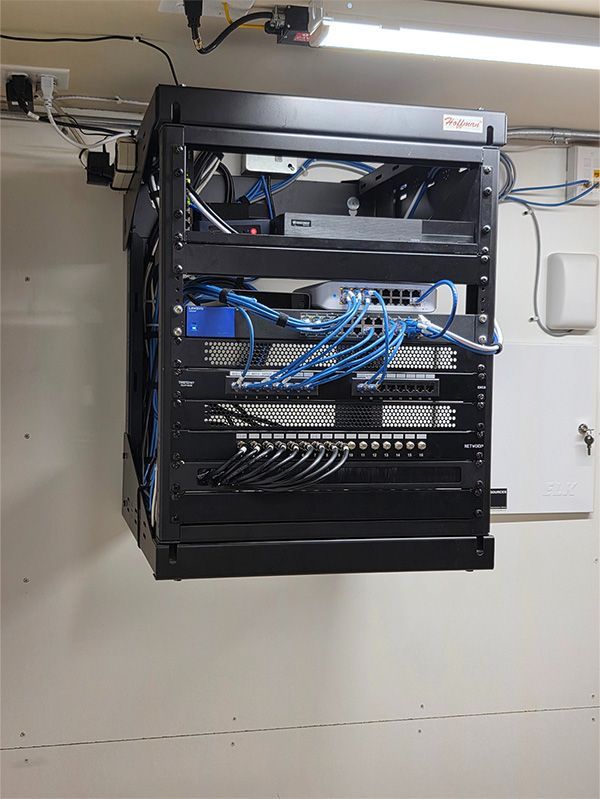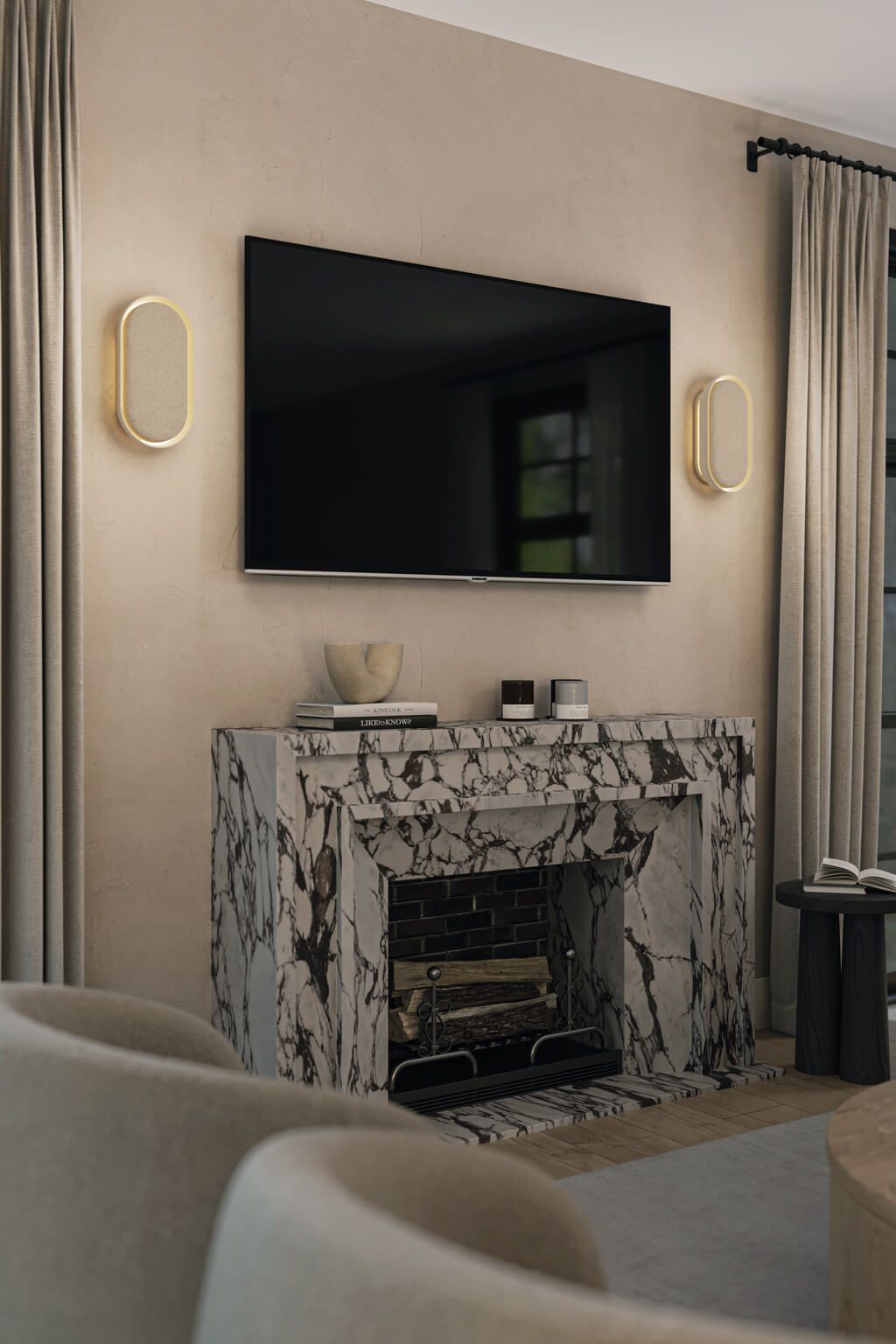Why “Wireless Only” Smart Homes Fall Short (and Why Wiring Still Wins)
November 16, 2025
Why “Wireless Only” Smart Homes Fall Short (and Why Wiring Still Wins)
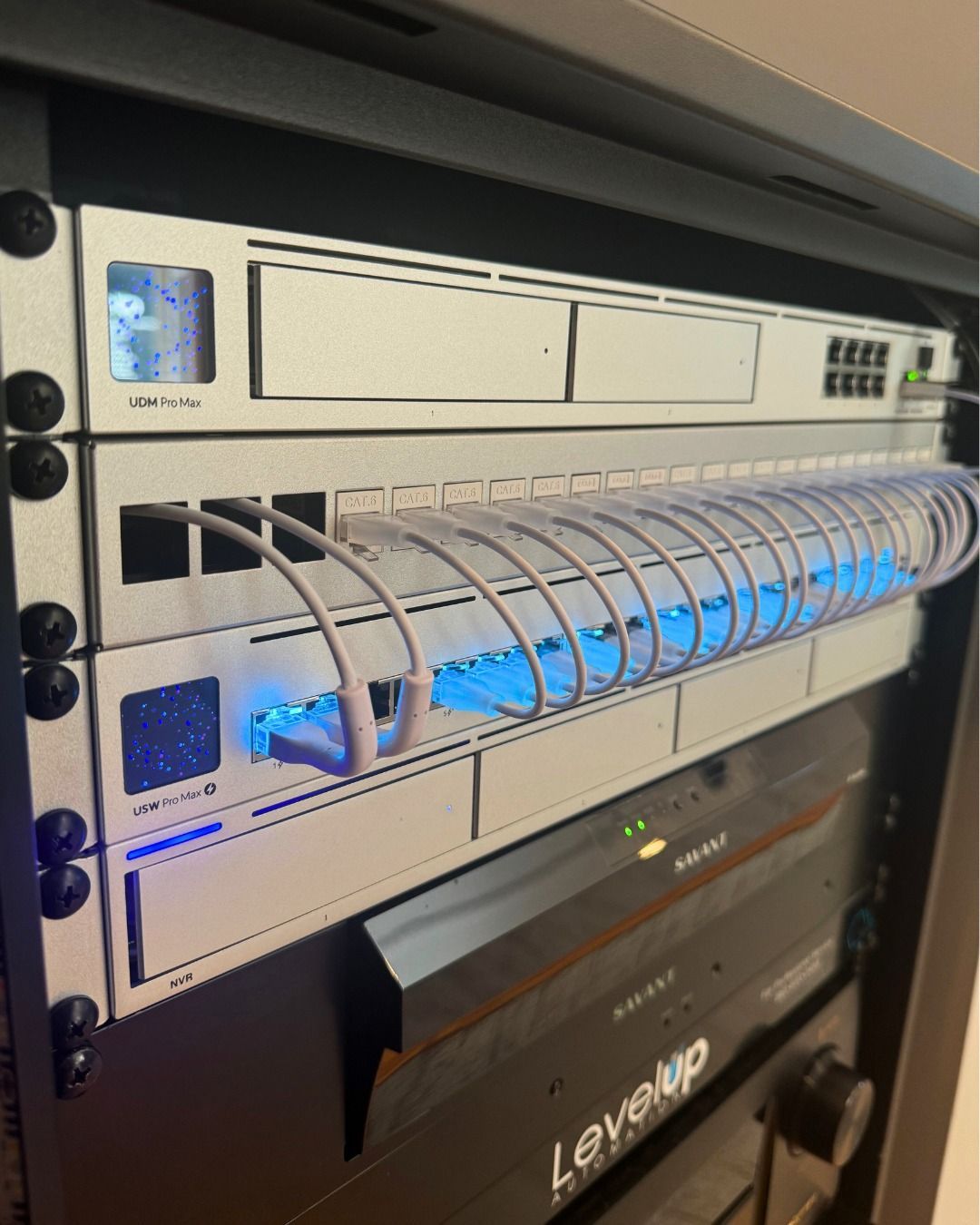
It’s tempting to believe everything in a modern smart home can run on Wi-Fi. Device manufacturers market “wireless only” as clean, simple, and future-ready.
But in real homes across Montana, we see the opposite:
The most reliable, high-performance smart homes are built on a hardwired backbone, with Wi-Fi used strategically — not for everything.
As a Level Up Automation partner here in Montana, Smart Home Solutions designs, wires, and supports smart homes every day. And we can tell you with confidence: pulling low-voltage wire during construction or remodel is one of the smartest investments you can make.
Let’s break down why.
Wireless Isn’t Bad — It’s Just Not Enough
To be clear: Wi-Fi isn’t the enemy.
You need wireless for:
Phones and tablets
Laptops and casual browsing
Voice assistants and handheld remotes
Some smart devices that don’t offer a wired option
But Wi-Fi has real limits. It’s:
Shared by every wireless device in your home
Affected by walls, distance, and interference
Sensitive to congestion when many devices are active
A hardwired network doesn’t have those problems. When we wire your core devices and strategically place wired access points, Wi-Fi can do what it does best—serve mobile devices—without being overloaded by everything else.
You Have 1 Gig Coming In. Why Doesn’t It Feel Like 1 Gig?
Many Montana homes we work on now have 1 gigabit (or faster) internet service.
On paper, that sounds like endless speed. In practice, it’s more like this:
Your internet service brings up to 1 Gbps into your router.
Your router then shares that bandwidth across all connected devices: wired and wireless.
Wi-Fi clients are all competing for airtime on the same radios.
Now imagine a typical modern home:
2–4 smart TVs streaming HD or 4K
6–12 security cameras
2 parents on video calls
2–4 kids gaming or streaming
30–60 “smart” devices (thermostats, locks, lights, doorbells, speakers, etc.)
Even if each device doesn’t use a ton of bandwidth, Wi-Fi radios can only handle so many active conversations at once. The more devices you stack on top, the more:
Latency increases
Buffering happens
Calls drop
Apps feel “laggy”
And this leads to a common complaint we hear:
“We’re paying for fast internet, but things still feel slow.”
Often, the problem isn’t your internet service. It’s the way everything is fighting over Wi-Fi.
Why Hardwired Devices Perform More Consistently
Let’s talk about what happens when you plug things in.
When a device is hardwired (using CAT6 or better) into your network:
It doesn’t rely on signal strength or distance.
It doesn’t share wireless airtime with other devices.
It gets lower latency and more consistent throughput.
It frees up Wi-Fi capacity for devices that truly need wireless.
Most modern routers and network switches are designed so that wired traffic is handled faster and more predictably than wireless traffic. Wired connections are:
Full-duplex (can send and receive at once)
Less error-prone
Not contending for space on the radio
So when we hardwire:
Smart TVs and streaming boxes
Gaming consoles
Network video recorders (NVRs)
Smart home processors and controllers
Desktop computers and workstations
Audio systems and AV racks
Security systems
…we dramatically reduce the load on your Wi-Fi and give those devices rock-solid performance.
Wired Access Points vs Mesh Wi-Fi: What’s the Difference?
This is one of the most important distinctions we explain to homeowners and builders.
Mesh Wi-Fi (Wireless Backhaul)
Popular mesh systems (Eero, Orbi, Google Nest, etc.) usually work like this:
You place several nodes around your home.
Those nodes talk to each other wirelessly (this connection is called backhaul).
The same wireless spectrum is used both for backhaul and for your devices.
The downside?
Every time mesh nodes talk to each other, they use up airtime that your phones, laptops, and TVs also need.
As you add more mesh points, you can actually add more overhead and more interference, not just more coverage.
Mesh is an improvement over a single cheap router in a closet, but it’s still a compromise.
Wired Access Points (Structured Network Design)
A wired access point system — like what we design and install as Level Up Automation Montana — works differently:
Each access point is connected back to the main network using hardwired CAT6.
The “backhaul” is all on wire, not over the air.
Wireless radios on each AP are focused on serving your devices, not talking to each other.
The benefits:
Faster, more consistent Wi-Fi speeds throughout the home
Much better performance under load (multiple streams, cameras, calls, etc.)
Cleaner hand-offs as you move from one area to another
Enterprise-style reliability in a residential setting
This is the same architecture used in offices, schools, and commercial spaces—scaled and tuned for your home.
Short-Term Benefits of Pulling Wire During Construction
If you’re in the design, framing, or rough-in phase of a new home or major remodel, pulling low-voltage wire right now delivers immediate benefits:
Better Wi-Fi performance from day one, thanks to wired access points
Cleaner TV and AV installations with hidden wiring instead of visible cables
Less strain on your wireless network when high-demand devices are wired
Fewer callbacks and frustration over “mystery Wi-Fi issues”
And compared to what you’re already spending on the rest of the project, low-voltage wiring is a relatively small line item with outsized impact.
Long-Term Benefits: Future-Proofing Your Smart Home
Here’s where wiring really pays off over the life of the home.
1. Ready for Whatever Comes Next
8K streaming, VR, AR, new smart home platforms, AI-powered devices—these all demand stable, high-bandwidth connections. Your low-voltage wiring can last decades. Wi-Fi standards will change every few years.
2. Less Destructive Work Later
Trying to retrofit wiring into a finished home is messy: cutting drywall, fishing wires, patching and painting. Doing it while walls are open is vastly cheaper and cleaner.
3. Higher Resale Appeal
Buyers are increasingly asking about:
Strong Wi-Fi and coverage
Wired home office options
Pre-wire for audio, security, and networking
A home with structured wiring and wired access points stands out.
4. More Reliable Security & Life Safety
Security cameras, alarm systems, access control, and NVRs all benefit from being wired. When it comes to security, we want fewer variables and more certainty.
5. A Better Everyday Experience
When the network just works, you notice it by not noticing it:
No random buffering
Fewer dropped calls
Less “tech support” stress for the whole family
The Right Mix: Hardwired Backbone + Smart Wireless
The goal isn’t to get rid of Wi-Fi.
The goal is to design a balanced, high-performance smart home network:
A hardwired backbone (CAT6 or better) for your heavy-use and always-on devices
Wired access points placed strategically for full-home coverage
Wi-Fi reserved for mobile devices and gear that truly needs to be wireless
This is the approach we take on every Level Up Automation Montana project, whether we’re working with a builder, architect, designer, or homeowner directly.
Planning a New Build or Remodel in Montana? Let’s Get the Wiring Right.
If you’re building or renovating in Missoula, the Bitterroot, or anywhere in Western Montana, this is the perfect time to design your network the right way:
Pre-wire for data, audio, and video
Plan locations for wired access points
Decide which devices will be hardwired vs wireless
Coordinate with your builder, electrician, and designer so everything works together
At Smart Home Solutions, your local Level Up Automation partner, we handle:
Design – smart home networking, Wi-Fi, and device layout
Pre-wire & trim-out – clean, documented, labeled cabling
Programming & support – so your smart home feels simple, not overwhelming
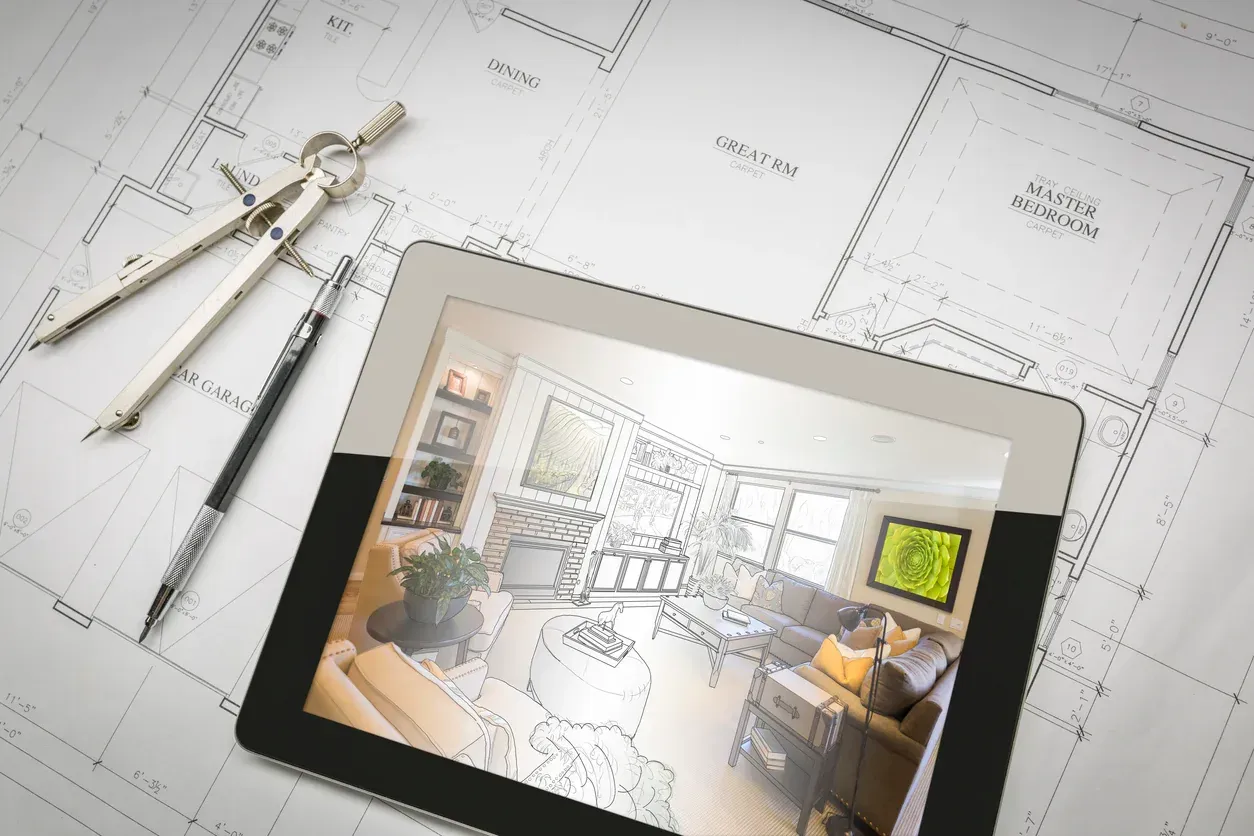
Building a new home can be exciting. With rising costs, at times it can be stressful to think about all the design, choices and budget considerations. For many, it can be easy to overlook smart home technology infrastructure while making important decisions about elements like home layout, bathrooms and kitchen design. Why are connected homes not an automatic element to new home builds? The easy answer is that the building industry is catching up to technology infrastructure for modern day home builds. As connected homes or smart homes are a newer category ( electrical and plumbing infrastructure have been in place for about 100 years) Indoor plumbing began in the mid 1800s but it wasn't until the 1930s that plumbing codes were created to support public heatlh and prevent outbreaks of diseases related to poor plumbing or lack of infrastructure in homes. Around this time indoor plumbing became more common in homes and not just an item for the wealthy. By the 1930s indoor electricity made it's way into urban areas. It was not until the 1940s that "flipping a switch" became a modern necessity with new home builds. While the invention of the internet happened in1983, it was not until the mid 1990s that internet became prevelant in homes. With its explosive growth over the last 50 years, it is not suprising that new homeowners are driving the requirement for homes to be connected with IT infrastructure. While some builders are hesitant to add a new trade or complexity to their projects that may impact budget or their timelines, consumer demand means that many are now incorporating it into their builds in order to lead what is a new system very much akin to plumbing and electrical infrastructure. You have a plumber, you have an electrician and now you have a technology integrator. Technology designers or integrators like Level Up Automation are educated and often professionally certified in the design, installation and interoperability of all your network infrastrucure. Design your systems to work on one app (not several) Work with clients and their architectural plans to make recommendations Work with client privacy preferences to ensure your system and local data is where you want it (yes, you can protect your privacy and still have automation) Work with your trades, primary builders and electricians to plan and place wiring for infrastructure such as your network equipment, security, sound systems, smart lighting and other elements. Program and design scenes in your control system to provide easy control for everyone in the home regardless of technology capability. The most important emerging infrastructure of your new home is technology infrastructure. With incorporating a few of our best practices you can easily future proof your home to be a smart home for many years to come. Top 3 best practices in technology systems in building a new home to save you money and future proof. 1. CAT6 network cable is the minimum standard for data communications. What is CAT5 or 6? CAT is a short name for "category network cable", it is low voltage network cable used for data communications and increasingly, to provide power without high voltage or line voltage needed. If you remember before your laptop connected to the internet wirelessly it is the cable you plugged in to hook up to the network. Each generation brings more speed and sophistication abilities to the cable - the number represents the edition (CAT2, CAT3, CAT4 and so on) Cat6, has significantly higher data speeds than cat5. Despite this, we still see CAT5 being run for new home builds. Using CAT5 will impact the speed of the communication and network devices you have in your new home. Make sure your home runs on nothing lower than CAT6 networking cable. CAT7 does exist as does Fiber (fiberoptics) - both are used currently when needed and are a great way to invest in future proofing your home communications. 2. Plan for your wireless network, sound systems, lighting and security. The control capabilities and speed of these systems are critical for the modern home, we recommend: Hardwire all your TV locations for streaming like Netflix, Hulu, and other sources. Hardwire for all your planned and future planned security camera locations in the front, back and side of your house - modern cameras are powered and communicate through CAT6. Hardwire your video doorbell - your front door is oftem on of the most important places to be able to see and communicate wirelessly. Packages, people and more. Hardwire your home office locations so laptop and desktop computer locations can have maximum speeds for those Zoom calls. Hardwire to your security panel or central home control system to provide power and connectivity Hardwire "wireless access" points in key zones throughout your new home where you will want to provide wireless access to ipads, phones or other mobile devices. Creating this infrastructure and "pre-wire" before your walls are closed up provides feature accessibility down the road and is also signficantly less expensive for you. The installation labor to wire after your home is built is approxiamately 35-40% more expensive as access to conceal wires in existing structure is labor intensive. Moreover, with the new energy efficiany installation being used it is often times impossible to wire for anything inside walls. This can be very limiting. 3.) Plan for speaker wire and pre wire construction speaker rings in main zones for easy add on of audio zones down the road. Modern homes have whole home control systems to distribute audio and content from sources like Spotify, Sonos or other platforms for music, podcast or news enjoyment throughout the home. Think about where you want to listen to music and entertainment content like podcasts or news. Architectural speakers installed flush with your ceiling, save on counter space or can be prewired to be added a future date post construction. These speakers provide high quality sound while delivering a built in, clean aesthetic. This keeps sound system off the ground or countertops, providing a clean look. We commonly design homes to be prewired for: Kitchens Living rooms Main Bathrooms Backyards (outdoor audio, video and extending your wireless network outside) Some secondary locations Home offices Garages, Basements or Bonus Rooms Additionaly, with the popularity of home streaming services like Netflix, Hulu and more, Many people are building home theaters to bring professional level audio and video into their homes. Will you have a dedicated room for home theater or will you use a family room as your main entertainment zone? Prewire for preferred television location, ensure cat 6 and power is present. Possibly also HDMI. Preferred wiring is to have all data cabling run to a media closet or a basement if you have one. Some common misses we see: Running low voltage network alongside high voltage wiring that delivers traditional power to outlets and appliances - this creates electrical interference with network signals. Not wiring while walls are down to future proof your new home. It is inexpensive to hard wire devices later even if you do not want them at the onset. Plan to put your “stuff” somewhere. No one likes a big pile of cable boxes, routers, entertainment systems and such. Designing your home to have all your technology in a equipment case (called a rack in our industry) Working with a technology designer like Level Up as early in the process as possible is the best approach - as soon as architectural plans have been created. Building a home? Book your free design consultation and visit our experience showroom to see, hear and touch all the latest in home technology.
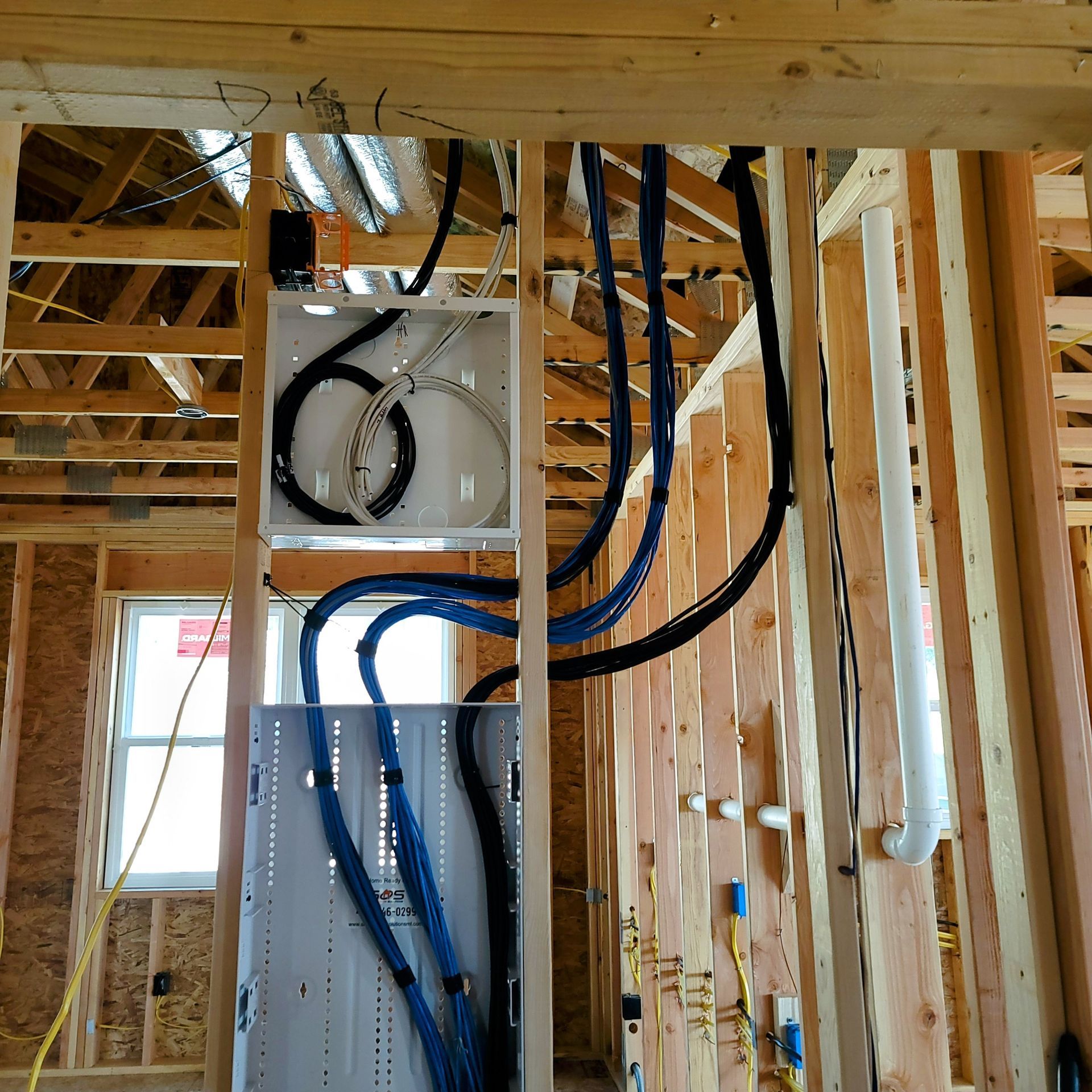
We specialize in transforming houses into smart, connected homes that enhance convenience, security, and energy efficiency. Whether you’re building a new home or undergoing a remodel, integrating smart home technology requires careful planning and execution. We love to listen to how clients envision living in their new home and cherish the opportunity to help future ready spaces for maximum enjoyment. To ensure a seamless and successful experience, our process is divided into four key stages: Design, Pre-Wire, Trim, and Final Installation with Programming. Each phase plays a crucial role in bringing your vision to life, and our team works closely with you at every step to ensure your smart home is intuitive, future-ready, and personalized to your lifestyle. Stage 1: Design: Creating a Smart Home Blueprint The Design Phase is where your smart home journey begins. This is the time to explore possibilities, establish goals, and plan for the future. Key Considerations: ✅ Personalized Consultation - We work with you to understand your daily routines, entertainment needs, security concerns, and automation preferences. ✅ System Planning - We determine the placement of smart lighting, audio-visual solutions, wireless shades, security cameras, climate controls, and other automation features. ✅ Technology Integration - We ensure all selected systems will work together seamlessly with one app (not six!), whether it’s with Josh.AI, Lutron, Sonos, Savant, Control4, URC, RTI, Ring, IC Realtime, or Ubiquiti and Alta Labs networking solutions. ✅ Future-Proofing - We consider potential technology upgrades and ensure your home is equipped to handle them. By the end of this phase, you’ll have a detailed smart home design plan that aligns with your lifestyle and budget, ensuring that every decision is intentional and forward-thinking. Stage 2: Pre-Wire - Laying the Foundation Once the smart home design is finalized, the next step is the Pre-Wire Phase. This stage occurs before walls are closed up, making it the perfect time to install the infrastructure that will power your smart home. Key Considerations: ✅ Strategic Wire Placement - We install low-voltage wiring for lighting control, audio systems, security cameras, shades, and networking to ensure strong connectivity throughout the home. ✅ Networking Backbone - A robust wired and wireless network is essential for a seamless smart home experience. We use high-performance networking solutions like Ubiquity, Alta Labs, and Araknis to guarantee fast, reliable connections. ✅ Audio Video Pre-Wiring - Whether you’re planning a whole-home audio, a dedicated home theater, Media Room, or a multi-room entertainment system, proper pre-wiring ensures optimal speaker and display placements. ✅ Security & Surveillance - Active deterrence cameras, doorbell cameras, and smart locks are strategically planned to maximize safety and coverage. By completing this stage and learning more about you, we ensure that your home is equipped with the necessary infrastructure to support all future smart technology. Stage 3: Trim - Preparing for the Finishing Touches The Trim Phase happens after the drywall is installed but before final devices and fixtures are placed. This is when key smart home components are mounted and prepared for integration. Key Considerations: ✅ Smart Lighting & Keypads - We install lighting control systems such as Lutron keypads, dimmers, and linear lighting fixtures in key locations. We are certified designers and programmers in Caseta, RadioRA3, Vantage Lighting, and HomeWorks. ✅ Speaker & Display Installation - In-ceiling and in-wall speakers are mounted, and pre-wired displays are prepared for final installation. ✅ Security Device Placement - Cameras, motion sensors, and smart locks are installed and tested. ✅ Networking Setup - Access points and routers are positioned for optimal coverage and performance. This stage is all about precision and placement in design, ensuring that devices are mounted in the right locations for maximum functionality and aesthetics. Stage 4: Final Installation & Programming - Bringing It All to Life The final phase is where your smart home truly comes to life. This is when we install and program all the smart devices, ensuring they function harmoniously and are tailored to your preferences. Key Considerations: ✅ Device Installation Calibration - TVs, touchscreens, speakers, thermostats, automated shades, and other smart devices are configured and optimized. ✅ Automation Scene Programming - We set up lighting scenes, voice commands, and automation sequences based on your lifestyle. ✅ System Integration Testing - Every device is tested for seamless integration, ensuring reliability and ease of use. ✅ Client Training Support - We provide a hands-on walkthrough of your new system, ensuring you feel comfortable and confident using your smart home features. This final step is where everything comes together, turning your house into a truly connected and intelligent home. Your Smart Home Partner: Level Up Automation We understand that a smart home isn’t just about technology; it’s about enhancing your lifestyle, improving efficiency, and providing peace of mind. Throughout each phase of your project, we partner with you to ensure your home automation system is designed and installed with precision and care. Whether you’re building a new home or remodeling an existing one, our expertise in smart home design ensures you get a system that’s powerful, seamless, and future-ready. Ready to design your dream smart home? Let’s start planning today! Contact Level Up Automation for a consultation and experience the future of home automation. www.levelupyourhome.com

Northborough, MA – [August 26, 2025] – Level Up Automation, a national leader in smart home and building technology, proudly announces that its Founder and CEO, Jennifer Mallett, has been appointed to the Sonos Dealer Advisory Board. In this prestigious new role, Mallett becomes the only female dealer currently serving on the board, marking a significant milestone for gender representation in the consumer technology industry. The Sonos Dealer Advisory Board is comprised of a select group of elite integration professionals who help guide Sonos’ product development, dealer programs, and customer experience strategies. Mallett’s appointment reflects her deep industry expertise, leadership in business innovation, and her long-standing commitment to advancing audio and automation experiences in homes and businesses across the country. “It’s an honor to join the Sonos Dealer Advisory Board and contribute to shaping the future of one of the most recognized and respected audio brands in the world,” said Mallett. “I’m especially proud to bring a female voice to the table, representing not only Level Up Automation but also the broader community of women who are building careers in smart home technology.” Under Mallett’s leadership, Level Up Automation has grown into the first-ever franchise system in home automation, with multiple locations across the U.S. The company is recognized for its design-forward approach, immersive showrooms, and commitment to client education. Mallett also holds certifications from leading technology platforms including Control4, Savant, Josh.ai, Lutron HomeWorks, and serves as a CEDIA Outreach Instructor. In addition to her appointment to the Sonos board, Mallett currently serves as Treasurer on the Executive Committee of CEDIA, the global trade association for the home technology industry. She was previously recognized as one of Dealerscope’s Most Powerful Women in Consumer Tech.
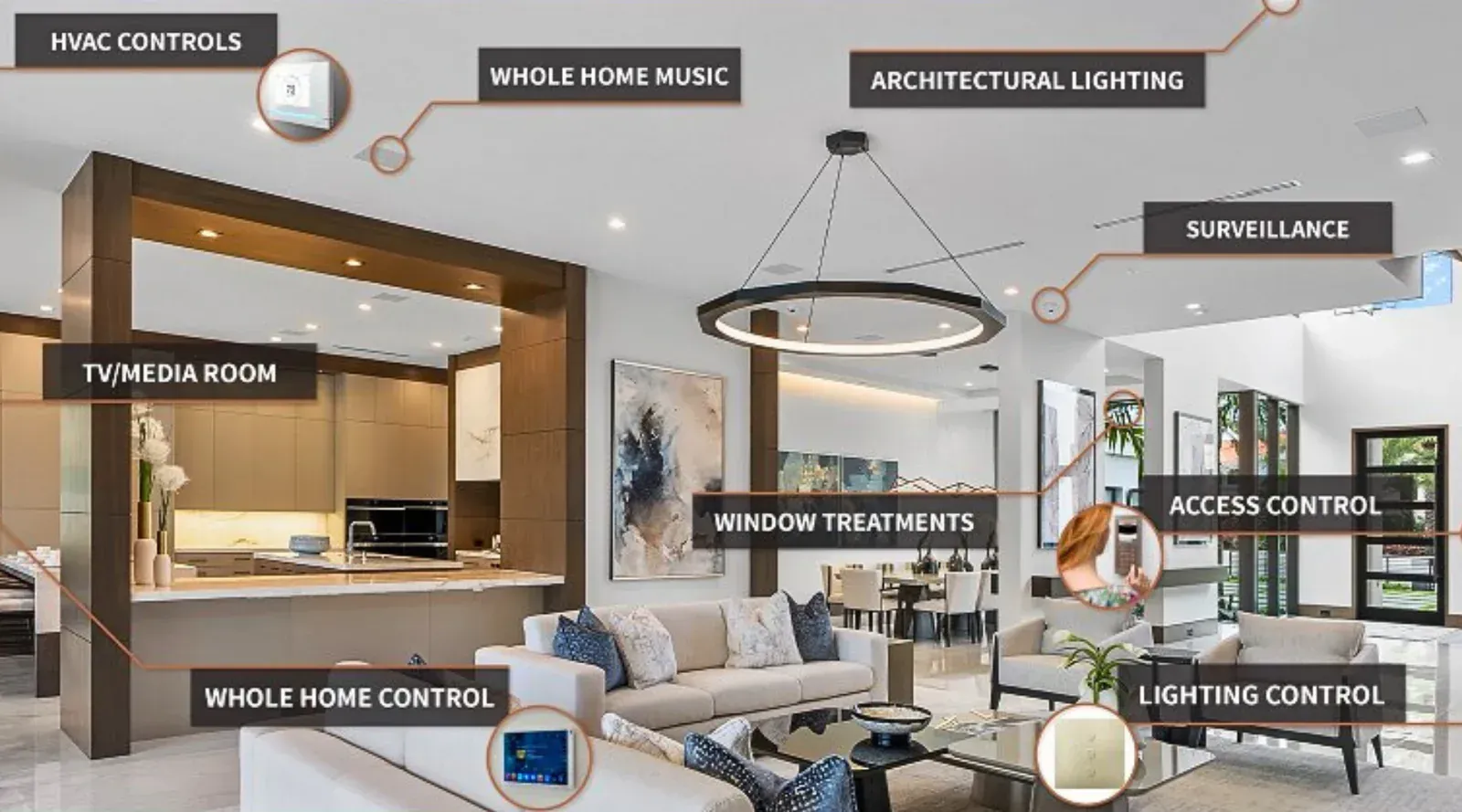
The future of the smart home isn’t just about what technology can do — it’s about how effortlessly it fits into the rhythm, aesthetics, and flow of a well-designed space. When done right, technology doesn’t dominate a home; it disappears into it — enhancing how it works and how it feels, without disrupting the look or experience. Whether you're a homeowner planning a renovation, a designer working with increasingly tech-savvy clients, or a contractor aiming to stay ahead of the curve, understanding how to integrate technology and design is no longer optional — it’s essential. This post explores the principles behind that integration: how thoughtful planning, collaborative teams, and a design-first mindset can lead to smarter, more beautiful spaces that stand the test of time. Why Tech & Design Need Each Other Too often, technology is treated as an afterthought — devices added after the design is finalized, wires hastily hidden, interfaces awkwardly installed. The result? A space that functions well, but doesn’t feel cohesive. On the other hand, when design leads the way without consideration for technology, it can unintentionally limit the capabilities or future scalability of a smart home. The answer? Integration from the start. When designers and technologists collaborate early, they can create: ✅ Clean, minimalist interfaces that preserve design intent ✅ Invisible or beautifully integrated hardware ✅ Intuitive experiences that don’t sacrifice elegance This kind of collaboration turns a house into a truly smart home — not just connected, but considered. Principles of Seamless Integration To successfully merge tech and design, these principles guide our approach: 1. Plan Holistically A great outcome starts with asking the right questions early: What are the client’s lifestyle needs? Where will they want convenience, automation, or ambiance? How should technology feel in the space — bold and modern? Discreet and invisible? The answers help shape both the design layout and the technology infrastructure from day one. 2. Design for Evolution Good design leaves room to grow. We build systems with scalability in mind — so as new technologies emerge or homeowner needs evolve, systems can be updated without major disruption. 3. Prioritize User Experience No matter how advanced the tech is, it must be easy to use. A single, intuitive interface — mobile, voice, or touch panel — is key. The most luxurious systems are the ones people forget they’re even using. What Does This Look Like in Practice? Some examples of integrated technology and design include: Architectural lighting that automatically shifts throughout the day, enhancing natural light while preserving mood Voice-activated shade systems that blend seamlessly with fabric selections and design palettes Media rooms with hidden speakers, motorized screens, and recessed lighting that match the architectural aesthetic Security systems with smart cameras and entry systems discreetly embedded into the home’s structure Climate control that adjusts invisibly, with no clunky thermostats interrupting wall flow Each of these touches might go unnoticed on their own — but together, they elevate the feel of the space dramatically. Collaboration is Key We believe in co-creating these environments. That means: Designers guiding layout, finish, and spatial flow Technologists advising on placement, connectivity, and functionality Homeowners sharing their needs and lifestyle preferences The most successful projects are those where everyone is at the table from the beginning. Open communication and shared goals help avoid costly missteps, reduce redesigns, and ensure that both aesthetic and functional expectations are met. When technology and design teams align early, the result is a seamless blend of form and function that serves the client — and the space — for years to come. The Path Forward: Designing Homes That Think and Feel As smart home technology becomes more embedded in how we live, the demand for spaces that balance innovation with intentional design will only grow. Whether you're designing a modern new build or updating an existing home, the future lies in thoughtful integration — where every button, sensor, and wire supports a space that is not only intelligent, but also inviting. By embracing collaboration and planning with both design and technology in mind, we can create homes that feel as good as they function. Want to learn more about the value of integrating technology and design? Click the link below to register for our free CEU course "Integrating Technology and Design". Link to register
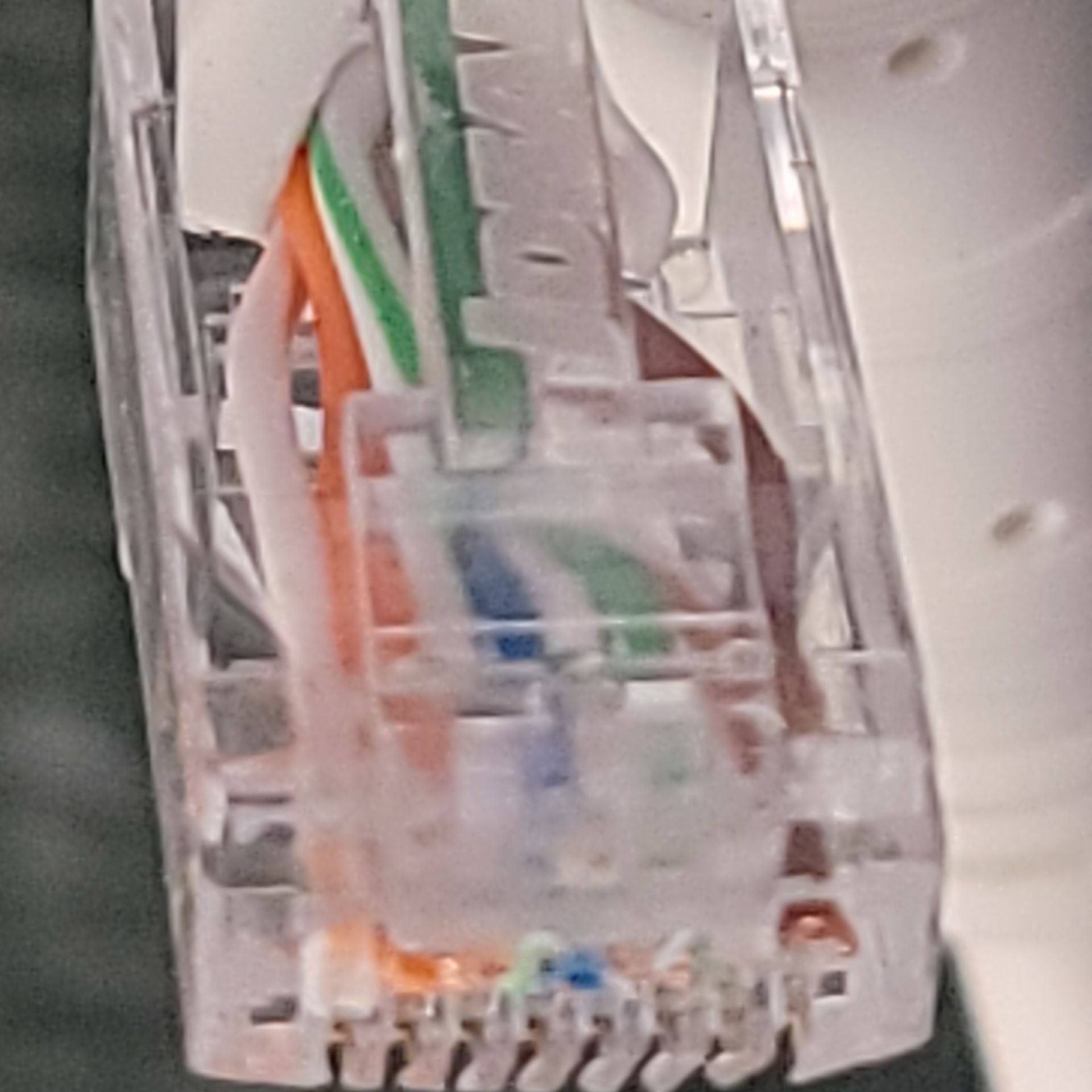
In this particular case, the issues weren’t just about sloppy execution—they were about missed opportunities. Without labeling, it's nearly impossible to troubleshoot or expand the system in the future. Without proper documentation, any future installer (or even the original team) is left guessing. And without planning for endpoints like cameras, touchscreens, and network gear, the home ends up with a bunch of wires in the walls that don’t serve any clear purpose. That’s where we come in. At Smart Home Solutions, we specialize in turning chaos into clarity. Our team does more than just install gear—we design systems that work, and we document them every step of the way. When we get called into a project like this, our first step is to walk the site and take inventory: where are the wires going, which ones are labeled, which ones aren’t, and where are the critical gaps? From there, we clean things up. We re-label every wire we can identify. We mark photos with zones and functions, and we reroute wires if necessary to match the actual needs of the system. Sometimes that means moving a wire a few feet to get it where a camera will actually be installed. Other times, it means cutting our losses and adding a new run entirely. The important thing is that we leave the site with a plan—and with documentation that the client can refer back to at any time.
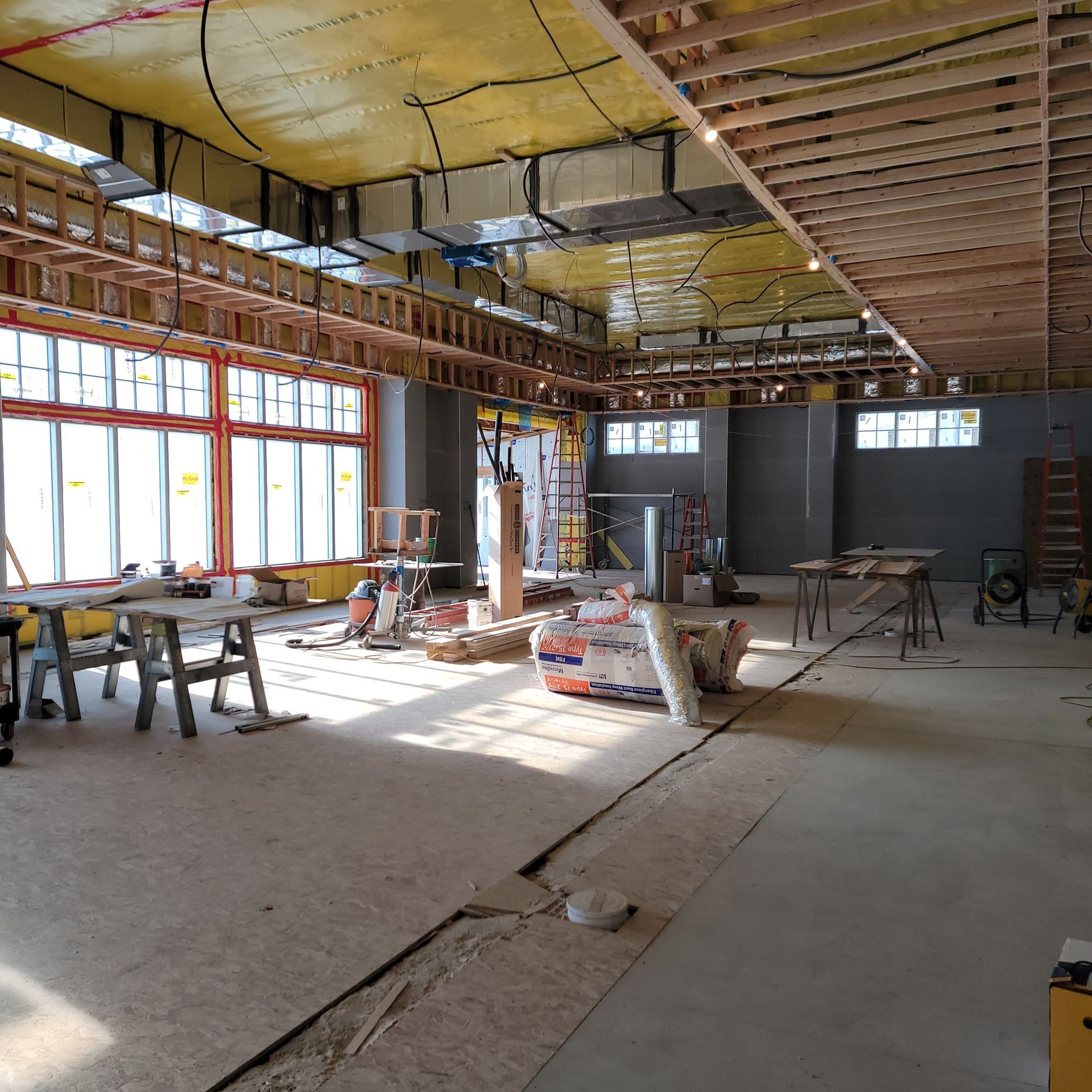
At Smart Home Solutions, we take pride in delivering state-of-the-art automation and entertainment solutions to elevate high-end projects. We are honored to collaborate with Magnum Opus, a premier AV integrator based in Hamilton, Montana (montanasmarthome.com), as they lead this ambitious luxury development in Missoula, Montana, in conjunction with Paradise Theater (paradisetheater.tv). Given the scale of this project, Magnum Opus enlisted our expertise to assist with the installation of advanced smart home technologies. Luxury Indoor Swimming Pool Enhanced with Smart Technology One of the standout features of this project is the indoor swimming pool, which will be integrated with a full Lutron HomeWorks system. This sophisticated lighting and automation platform will allow effortless control over the pool’s lighting, ensuring the perfect ambiance at any time of day. The system will feature Lutron Palladium keypads, known for their sleek, modern design and precision control. These keypads will seamlessly integrate with the broader automation system, providing intuitive access to lighting, shades, and other smart home functions. To complement the luxurious atmosphere, Lutron motorized shades will be installed to offer precise light control and privacy. These shades will adapt to natural light conditions, optimizing comfort and energy efficiency while maintaining the sophisticated aesthetic of the space. For an immersive audio experience, Coastal Source will provide on-wall Razor speakers and standing subwoofers around the pool area. These high-fidelity, weather-resistant speakers (coastalsource.com) will deliver crystal-clear sound, whether for relaxation or entertainment. The Josh AI voice automation system will further enhance convenience, allowing seamless, natural-language control over music, lighting, and temperature with simple voice commands. Control4 will serve as the backbone of the automation system, unifying all smart devices into a single, easy-to-use interface, accessible via touchscreens, mobile apps, or voice. For security and controlled access, a state-of-the-art access control system will be implemented, ensuring seamless entry for residents and guests while maintaining the highest levels of security. A High-Performance Home Theater with Infrasonic Sound Beyond the stunning pool area, this project will also feature a world-class home theater, designed to provide an unparalleled cinematic experience. Paradise Theater, recognized for their expertise in high-performance home cinema design, is spearheading the architectural and acoustic design, ensuring an optimal viewing and listening environment. This theater will be equipped with infrasonic speakers, capable of producing ultra-low frequencies that are not just heard but physically felt. These cutting-edge speakers will enhance immersion in movies, music, and gaming, delivering a visceral experience that traditional speaker systems cannot match. The theater’s lighting will also be seamlessly integrated with the Lutron HomeWorks system, allowing custom lighting scenes to match the mood of any film or event. The entire theater space will be meticulously calibrated to deliver a true reference-level performance, making it one of the most advanced private theaters in the region. Pioneering Smart Home Solutions in Montana As the leading provider of smart home automation in Missoula, Montana, we are excited to contribute to this landmark project. Collaborating with Magnum Opus, who is leading the overall integration, and Paradise Theater, who is ensuring a world-class cinematic design, highlights the power of working with industry experts to achieve a truly exceptional result. With advanced Lutron automation, Coastal Source audio, Control4 integration, and Josh AI voice control, this project is redefining smart luxury living in Montana. We are proud to play a role in bringing this extraordinary vision to life. Stay tuned for more updates as this project progresses!

If you live in western Montana, you know how relentless the snow has been these past few days. This morning, as I was getting ready to leave for work, I heard the familiar sounds of winter struggle—a car door opening and closing, the scrape of a shovel, and an engine revving. Not a good sign when the roads are packed with snow. I looked outside and saw my neighbor stuck in her four-wheel-drive SUV. The snowplow had just passed, packing her driveway solid with heavy, icy snow—right after she spent an hour shoveling it. I hurried to get dressed and go help, but by the time I got outside, she was already gone. I knew she’d have to fight her way back in later, so I took my truck, locked the rear differentials, and packed down the snow in front of her driveway, making it easier for her when she returned. Later, I did the same for my own driveway so my wife could get in when she got home from work. Later that day, my neighbor’s mother called me over. She tried handing me $40. I immediately refused, but what she told me next hit me hard. Her daughter works with special needs children and helps them off the bus in the mornings. She had been flustered and overwhelmed—not just because of the snow, but because today marked the 8th anniversary of her father’s passing. She was struggling, and she didn’t even have time to stop and process it. I didn’t help for money. I did it because neighbors help neighbors. That’s how I was raised. Growing up, my parents always asked me to do little things for the neighbors—taking their garbage cans back, clearing their driveways when I shoveled ours. I never thought much about it back then. But as I get older, I realize just how much those small acts mean. Right now, there’s a lot of division in our country. Politics, beliefs, opinions—it’s easy to focus on the things that separate us. But at the end of the day, none of it matters when your car is stuck in the snow. We share the same streets. The same neighborhood. The same community. When one of us does better, we all do better. So next time you’re out shoveling, go a few extra feet. If you’re pulling in your garbage can, grab your neighbor’s too. These little things make a huge difference. And if you really want to “pay it forward,” skip the Starbucks line and help someone who truly needs it. Trust me—this kind of giving is far more rewarding. #ThinkGloballyActLocally #NeighborsHelpNeighbors #MontanaLife #PayItForward

